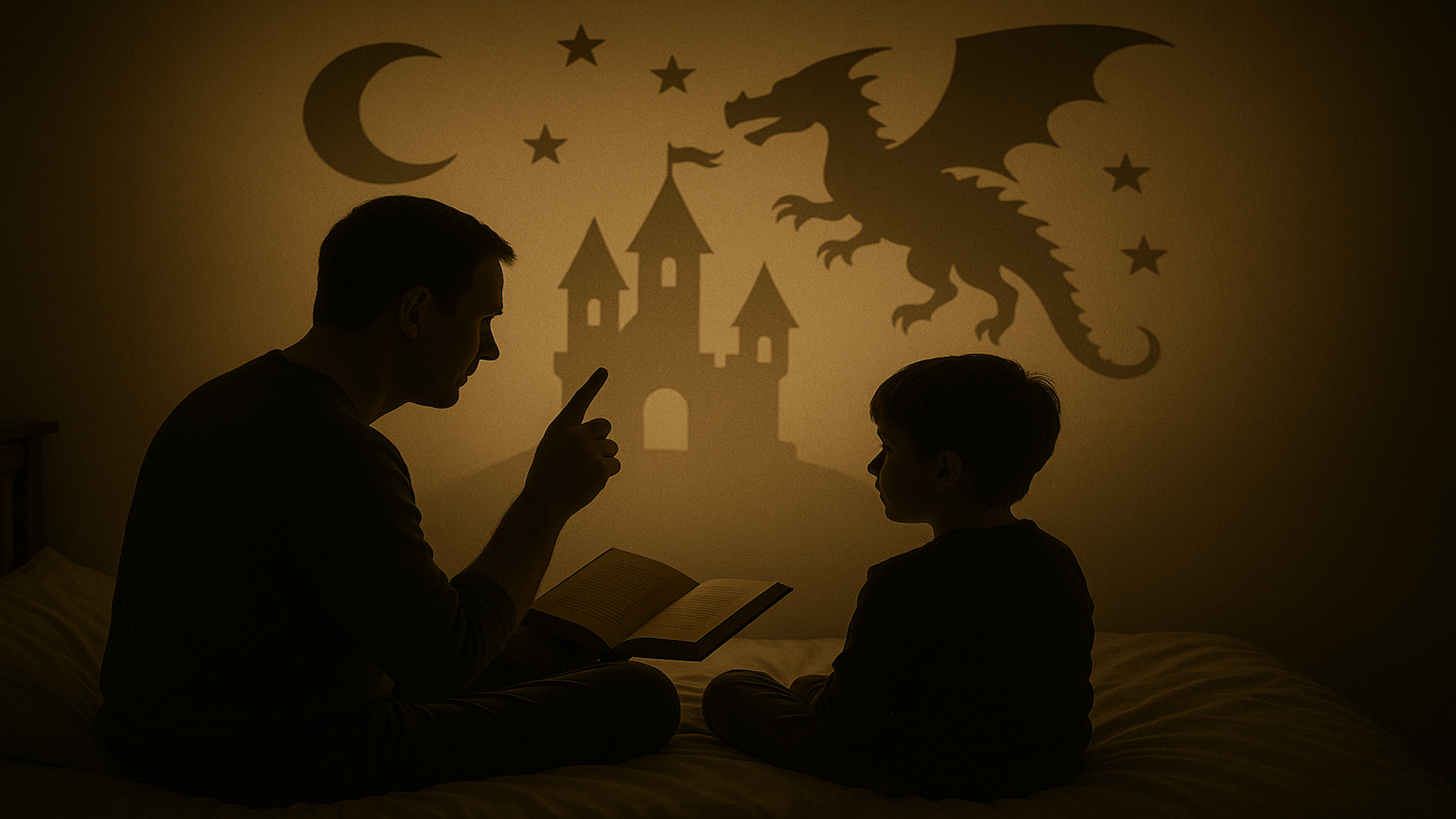“Once upon a time…” Those four words aren’t just the start of a story — they can be the start of something powerful between you and your child.
When we make up stories together, we’re doing more than entertaining. We’re building trust, language, empathy — and a connection that kids remember long after the story ends.
Here’s why co-storytelling isn’t just a fun tradition — it’s a family bonding tool backed by science.
1. You’re Creating Emotional Safety
When kids help shape a story, they feel heard. They feel important.
This kind of creative back-and-forth builds what psychologists call shared meaning-making, which strengthens emotional security between parent and child¹. Even silly stories send a deep message: I’m listening. I care.
2. You’re Helping Them Build Empathy
Adding a character’s feelings or choices to the story teaches kids to consider what someone else might think or feel.
This practice supports theory of mind — a child’s growing ability to understand emotions beyond their own². That’s how imagination turns into empathy.
3. You’re Growing Their Language Skills (Without Homework)
When you co-create a story, your child is practicing vocabulary, sequencing, and expressive language in a natural way.
Interactive storytelling — especially when shared with a caregiver — has been linked to stronger language development in early childhood³. It’s low pressure. High impact.
4. You’re Seeing What They’re Really Feeling
When the made-up monster is “scared of school” or the superhero “just wants to be left alone,” it can say a lot.
Storytelling gives children a way to express things they might not know how to say directly⁴. It’s a window into what they’re processing.
5. You’re Making a Memory — Together
Shared storytelling becomes a ritual. And rituals matter.
Research shows that these repeated moments — even just 10 minutes a night — help families feel closer and create lasting emotional bonds⁵.
Why This Still Matters
Today’s families are busy. Screens are everywhere. But co-storytelling remains a quiet, joyful way to reconnect.
📚 References
¹ Fivush, R., & Nelson, K. (2004). Culture and language in the emergence of autobiographical memory. Psychological Science, 15(9), 573–577. https://doi.org/10.1111/j.0956-7976.2004.00722.x
² Vygotsky, L. S. (1978). Mind in society: The development of higher psychological processes. Harvard University Press.
³ Mol, S. E., Bus, A. G., & de Jong, M. T. (2009). Interactive book reading in early education: A meta-analysis on dialogic reading. Review of Educational Research, 79(2), 979–1007. https://doi.org/10.3102/0034654309332561
⁴ Nicolopoulou, A. (2005). Narrative performance in childhood: The role of adult-child collaboration. Narrative Inquiry, 15(1), 99–125.
⁵ Spagnola, M., & Fiese, B. H. (2007). Family routines and rituals: A context for development in the lives of young children. Infants & Young Children, 20(4), 284–299. https://doi.org/10.1097/01.IYC.0000290352.32170.5a

 All Posts
All Posts
